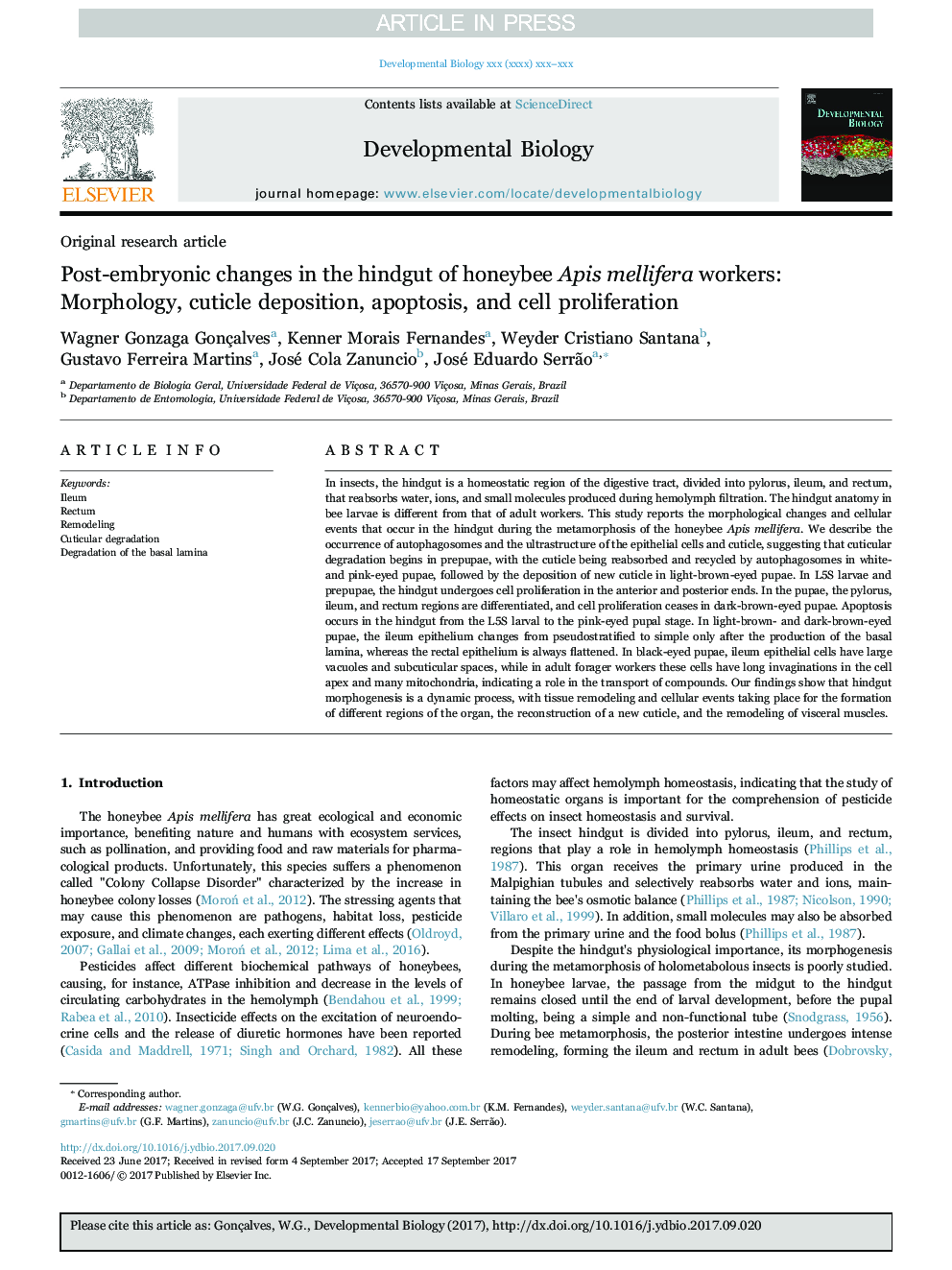| کد مقاله | کد نشریه | سال انتشار | مقاله انگلیسی | نسخه تمام متن |
|---|---|---|---|---|
| 8467837 | 1549560 | 2017 | 11 صفحه PDF | دانلود رایگان |
عنوان انگلیسی مقاله ISI
Post-embryonic changes in the hindgut of honeybee Apis mellifera workers: Morphology, cuticle deposition, apoptosis, and cell proliferation
دانلود مقاله + سفارش ترجمه
دانلود مقاله ISI انگلیسی
رایگان برای ایرانیان
موضوعات مرتبط
علوم زیستی و بیوفناوری
بیوشیمی، ژنتیک و زیست شناسی مولکولی
بیولوژی سلول
پیش نمایش صفحه اول مقاله

چکیده انگلیسی
In insects, the hindgut is a homeostatic region of the digestive tract, divided into pylorus, ileum, and rectum, that reabsorbs water, ions, and small molecules produced during hemolymph filtration. The hindgut anatomy in bee larvae is different from that of adult workers. This study reports the morphological changes and cellular events that occur in the hindgut during the metamorphosis of the honeybee Apis mellifera. We describe the occurrence of autophagosomes and the ultrastructure of the epithelial cells and cuticle, suggesting that cuticular degradation begins in prepupae, with the cuticle being reabsorbed and recycled by autophagosomes in white- and pink-eyed pupae, followed by the deposition of new cuticle in light-brown-eyed pupae. In L5S larvae and prepupae, the hindgut undergoes cell proliferation in the anterior and posterior ends. In the pupae, the pylorus, ileum, and rectum regions are differentiated, and cell proliferation ceases in dark-brown-eyed pupae. Apoptosis occurs in the hindgut from the L5S larval to the pink-eyed pupal stage. In light-brown- and dark-brown-eyed pupae, the ileum epithelium changes from pseudostratified to simple only after the production of the basal lamina, whereas the rectal epithelium is always flattened. In black-eyed pupae, ileum epithelial cells have large vacuoles and subcuticular spaces, while in adult forager workers these cells have long invaginations in the cell apex and many mitochondria, indicating a role in the transport of compounds. Our findings show that hindgut morphogenesis is a dynamic process, with tissue remodeling and cellular events taking place for the formation of different regions of the organ, the reconstruction of a new cuticle, and the remodeling of visceral muscles.
ناشر
Database: Elsevier - ScienceDirect (ساینس دایرکت)
Journal: Developmental Biology - Volume 431, Issue 2, 15 November 2017, Pages 194-204
Journal: Developmental Biology - Volume 431, Issue 2, 15 November 2017, Pages 194-204
نویسندگان
Wagner Gonzaga Gonçalves, Kenner Morais Fernandes, Weyder Cristiano Santana, Gustavo Ferreira Martins, José Cola Zanuncio, José Eduardo Serrão,